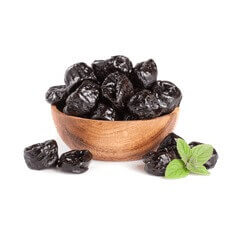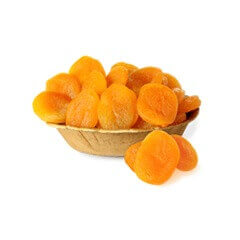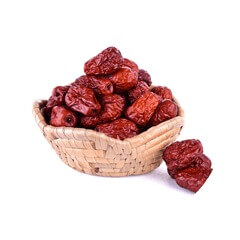Long Grain Basmati Rice
- Home
- Rice

Long Grain Basmati Rice
Long Grain Basmati Rice is a variety of steam basmati rice that contains high amounts of fiber, making it healthier than the regular version of basmati rice. It also has the same delicate flavor and texture as other types of Basmati rice. This signature product contains high amounts of fiber that promote a healthy gut and inhibit the absorption of fat, leading to reduced calorie intake. In addition, the presence of high levels of fiber means you can feal full for longer periods of time, helping you avoid over-consumption.
There are a lot of dishes in the Middle East and South Asia that rely on Basmati Rice as well as other countries. This custom has been handed down for generations because of its health advantages. Some of the advantages include:
- You can eat more without overindulging or feeling hungry.
- Contains high amounts of fiber
- Fibers assist with weight loss by reducing calorie absorption.
- Bowel movements are also improved.
Basmati Rice is graded on the basis of its shape, texture, aroma, and low breakage. It should be stored in a dry, cold location away from direct sunlight to prevent color change or infestations.
Preparing Basmati Rice is a lot more complicated in each region; people prepare their rice in a unique manner to give their dishes the desired texture and flavor. Basmati rice may be prepared in a variety of ways, one of which is as follows:
- The rice is soaked with lots of water for 30 minutes to eliminate any excess starch.
- Then, you need to drain any excess water.
- Add the soaked rice to the pot with 2 cups of water, a little oil, and salt to your taste.
- Bring the mixture to a boil, covering it and lowering the heat to medium-low.
- Cook for 15 minutes. After 15 minutes, remove the lid and let the water boil off.
- Fluff the rice with a fork and you are finished.
It is critical to clean rice thoroughly in order to eliminate any dust from it. Individuals with allergies or dietary restrictions should consult with a medical professional to discover the correct quantity of Basmati rice to consume daily, if applicable. SGS, ISO 9001, and Vegan certifications have been issued for all of basmati rice varieties.
Basmati Rice FAQs
To cook rice, place water and rice in a saucepan. Bring it to a simmer on medium-high heat without the lid. Wait for the entire surface to become bubbly and foamy. Then, put the lid on and turn down the heat to medium-low. Cook for 12 minutes. After that, remove the saucepan from the stove and let it rest for 10 minutes. Once the time is up, fluff the rice, and it’s ready to serve!
Ut elit tellus, luctus nec ullamcorper mattis, pulvinar dapibus leo.
If you’re a fan of Indian and Middle Eastern cuisine, you’ve probably heard of Basmati rice – a popular variety of long-grain rice. What makes it a healthy choice? For starters, it’s low in fat and high in carbs and protein. Additionally, Basmati rice has a lower glycemic index than other types of rice, which can be beneficial for regulating blood sugar levels.
Basmati rice, a long-grain rice, is gluten-free, but it is important to be cautious of cross-contamination when purchasing pre-packaged or processed products, as they may have been processed in facilities that handle gluten-containing grains.
Basmati rice is a healthy super-grain that is loaded with B vitamins and minerals like magnesium and zinc. Plus, it contains all eight essential amino acids, including folic acid and is low in sodium with no cholesterol. With a low to medium glycemic index, Basmati rice releases energy slower and steadier, helping you maintain a more balanced energy level.
Basmati rice is a variety of fine long-grain rice that originated from India and Pakistan. The rice has been cultivated for many centuries in Punjab. The word basmati is derived from the Hindi word “basmati” meaning fragrant. Basmati rice has a unique aroma that makes it one of the most fragrant rice all around the globe.
Basmati rice has the lowest glycemic index among all rice types cultivated. After its digestion, it slowly releases energy into the body, maintaining a stable blood sugar level, which is a concern for any person suffering from diabetes.
Dogs can benefit from plain cooked rice as it is a healthy and easily digestible source of carbohydrates. It can be used to aid in digestion or included in homemade dog food recipes. However, it is important to avoid adding harmful ingredients such as onions or garlic.
Basmati rice is a variety of long-grain rice native to the Asian Subcontinent. Due to its fragrant aroma and fine long grains, it is something that is reserved for special occasions in India and Pakistan. Basmati rice requires rinsing before cooking.
A 100g of cooked basmati rice contains 121 kcal. It also contains 0.38g of fat, 25.22g of carbs, and 3.54g of proteins.
Basmati rice is undoubtedly regarded as the best rice in the world due to its distinctive aroma, its light and airy texture and delicate flavour. Additionally, it is high in fibre and proteins and low in fats and calories. Basmati rice has a lower glycemic index which makes it a healthy choice.
Rice is one of the most consumed eat in the world, and we eat almost rice on a daily basis in the form of various dishes like pasta, biryani, pilaf, risotto etc. All these products contain rice as an essential ingredient which belongs to the ketonic group. So basmati rice is not keto-friendly and is not suitable for a person if he/she is on a ketogenic diet.
You can compare basmati rice to other rice types, like white or brown rice, in terms of nutrients. There are minute variations in carbs, calories, fibre and proteins among different rice types, but the variations are not enough to make a significant difference. Most nutritionists consider black rice the healthiest, but black rice is a bit hard to find and expensive.
Jasmine rice is also a long-grain rice like basmati rice, but both are different in terms of texture and cooking properties. Jasmine rice tends to be sticky and moist after cooking, while basmati rice is known for its long and fine grains that remain separate and elongate during cooking. Long-grain rice, like basmati, is at least three times as long as it is wide.
Basmati rice not only excels in taste but also has many health benefits. It contains all eight essential amino acids and folic acid and is low in sodium and cholesterol-free. Basmati rice also has a lower glycemic index, which depicts it releases energy slower and steadier, leading to a more balanced energy level.










